Trumpington to Grantchester
Discover Grantchester and the River Valley
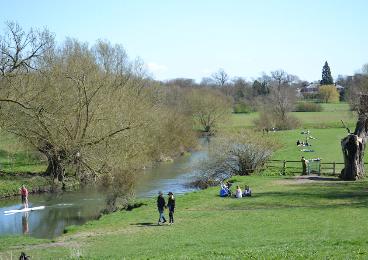
Walk or cycle approximately 4.5 miles/7.3 kms: walk on pavements and footpaths, including grass paths which can be muddy, but there are tarmac alternatives; cycle on roads to and from Grantchester (stops 3, 12)
This is one of a series of history trails about Trumpington and its links to surrounding villages and Cambridge. We hope that long-established and new residents will find the trails to be a fascinating way to discover more about the history of the area.
The trails have been developed by the Trumpington Residents’ Association and the Trumpington Local History Group, with support from Cambridge City Council. The project is led by Andrew Roberts and Howard Slatter. Thanks to Lady Jennings, Michael Goodhart and Francis Burkitt for advice, contributions and photographs about the history of Grantchester.
Printed copies available free of charge from The Clay Farm Centre and Trumpington Pavilion.
Contact the Local History Group with feedback: admin@trumpingtonlocalhistorygroup.org .
Download a PDF version of the trail or continue with the route …
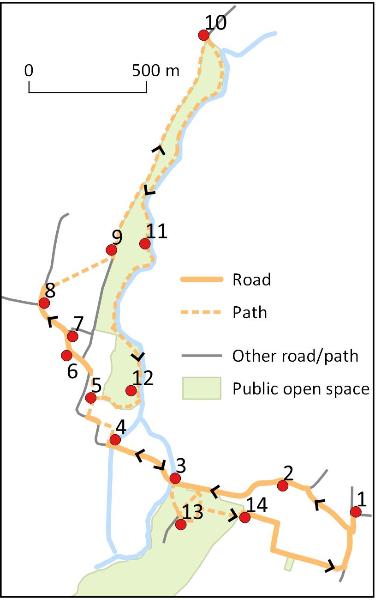
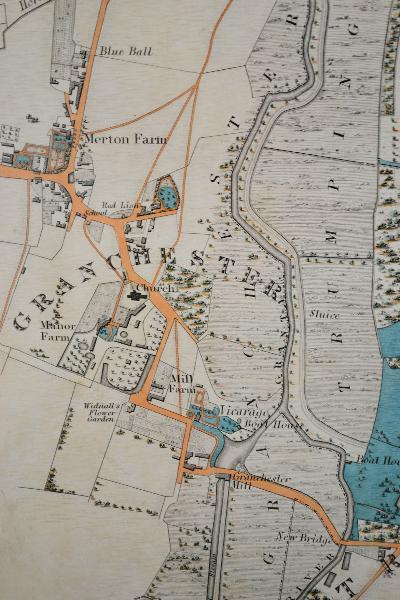
1. Start at the green by the shops, Anstey Way
2. Trumpington and Grantchester
The Medieval villages of Trumpington and Grantchester developed either side of the valley at one of the lowest points at which the River Cam could be easily forded. A cross-country route through the villages met the London-Cambridge route on the Trumpington side of the valley. Go along Grantchester Road, with Anstey Hall Farm on the left and Trumpington Hall estate on the right, to the river bridge (Trail 6).
3. The River Cam and Brasley Bridge
The River Cam is the boundary between Trumpington and Grantchester: two branches of the river merge upstream from here, the Rhee and the Granta (Trail 6). The Medieval ford was a short distance downstream and the first wooden bridge was built in a similar position. Brasley Bridge may be named after a Grantchester parish clerk, John Basley [sic], who died in 1716. A ‘New Bridge’ was built here in 1790, rebuilt in 1952 and 2015 (see plaque). Continue along the road to Grantchester village, as far as the mill pond. Cyclists may prefer to leave bikes near here and continue the route on foot.
4. Grantchester Mill and The Old Vicarage
Grantchester Mill belonged to Merton College from c. 1270. The corn mill was one of the largest upriver from Cambridge. It burnt down in 1928 and was renovated as a house. The mill stream runs from Byron’s Pool, where a weir dams the river (Trail 6). Its water wheels were in the sluice now covered by the road bridge. Walk on the path to the right beside the mill pond towards The Old Vicarage, whose grounds include a sculpture of a horse and a folly built in 1855, with a later writer’s conservatory. Continue along the path to the road, Mill Way. The Old Vicarage to the right was rebuilt c. 1683 and used as the vicarage until bought by Samuel Page Widnall in 1853. Rupert Brooke lodged here from 1911-13. Now the home of Lord and Lady Archer, there are further sculptures visible in the gardens, including a life-size figure of Rupert Brooke by Paul Day, unveiled by Lady Thatcher in 2006. Go on a short distance to The Orchard Tea Garden on the right.
5. The Orchard Tea Garden
The Tea Garden opened in 1897, when it served scones with honey from nearby hives. Brooke lodged at Orchard House from 1909-11 (Feature C). Beyond the tea room, go straight ahead to the road, through an orchard planted by Widnall in 1868. Spring Lane to the right goes to the meadows. Continue left up Mill Way to the High Street, with Manor Farm to the left and a footpath to Cambridge to the right. Cross the road to the War Memorial in the churchyard.
6. Grantchester Church and Manor Farm
The names on the War Memorial include Joseph Blogg (gardener at Merton House) and Rupert Brooke. The church tower has a weathercock and clock (hopefully not standing at ‘ ten to three ’?). Go to the right of the tower: the tall column on the right topped by a pelican is a memorial to Fellows of Corpus Christi College. Continue to the south boundary, from where Manor Farm house can be seen to the right and Manor Farm to the left. Turn to the south wall of the church, where fragments from an earlier building, including two ‘green man’ heads, were embedded when the South Aisle was built in 1876-77. Go into the church (Feature D). Come out of the churchyard and continue ahead along the High Street to the small green.
7. Village centre
The Green Man pub on the corner was originally a 17th century timber framed house. The lane to the right past the Red Lion pub is an alternative route to the meadows. Go ahead along the High Street. Until 2015, there was a garage on the left, built in 1929 on the site of the village forge. Further on the left, the thatched Reading Room was the village school from 1830 until 1867, when a larger school was built across the road (closed in 1981). The Village Hall is behind the Reading Room. The cottages further left, Wright’s Row, 17th to 19th century, were acquired by the Cambridge Cottage Improvement Society in 1938. The Society restored dilapidated cottages and let them to locals at affordable rents. The first cottage was once the village bakery. Cross to the right hand side of the road and continue to the junction.
Coton Road to the left is part of the cross-country route, on the line of the Medieval village green. Continue ahead along Broadway, passing The Rupert Brooke pub, a house called Cobblers (the former blacksmiths then cobblers) and former alms houses on the right. Merton House behind the wall on the other side of the road dates from c. 1790. Turn right onto the meadows.
9. Grantchester Meadows
Walk on the grass path diagonally across the field, with views across the meadows towards Trumpington and Cambridge: a few buildings may be visible in winter, including Trumpington church tower. Go to the tarmac path, turn left and continue towards Cambridge, with glimpses of the trees along Trumpington Road, church towers, a few high buildings in Cambridge and Addenbrooke’s Hospital chimney. In the 1930s, King’s College entered into a covenant to protect the meadows on this side of the river and Trumpington Farms takes similar care of the farmland on the Trumpington side of the river, all of which is Green Belt (Feature B). Continue to the exit gate from the meadows.
10. Extension to Newnham
As an optional extension to the main route, the tarmac path continues to Newnham, where there is a riverside path through Paradise Local Nature Reserve. There are further paths into Cambridge and a footbridge across the river to paths across Coe Fen for a return to Trumpington (Trail 2).
11. Grantchester riverside walk
To continue the main route, turn right before the gate and follow the riverside walk. (If the ground is too wet, return along the tarmac path to Mill Way, with views to Trumpington Hall, and rejoin the route at The Orchard.) Punting or walking along this route from Cambridge to Grantchester has been a favourite pastime for over 100 years (Feature B). There are willow trees which would have been pollarded in the past. Continue along the riverside as far as the gate into the final field.
The field has been developed by Trumpington Farms as the village cricket pitch and is also used for open-air movies. Follow the path across the field to the far corner where there is a gate into The Orchard. Go through the grounds of the tea garden and retrace the route to Grantchester Mill and across Brasley Bridge.
13. Byron’s Pool and Country Park
Walkers can take the gate to the right of the bridge and follow the grass path to the car park; cyclists should continue on the road then take the track to the right. From the car park, there are walks around Byron’s Pool nature reserve (Trail 6). To continue the trail, take either path from the car park uphill through Trumpington Meadows Country Park, opened in 2015 (Trail 6).
14. Trumpington Meadows
Go to the left hand corner of the park then follow the roads around the edge of the development, with Trumpington Church and Anstey Hall to the left (Trail 6). Continue to Hauxton Road, turn left and return to Anstey Way.
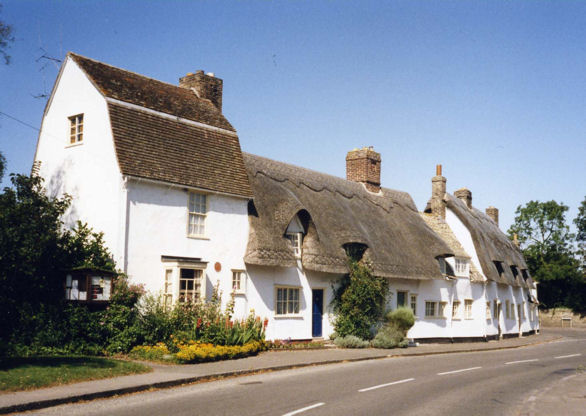
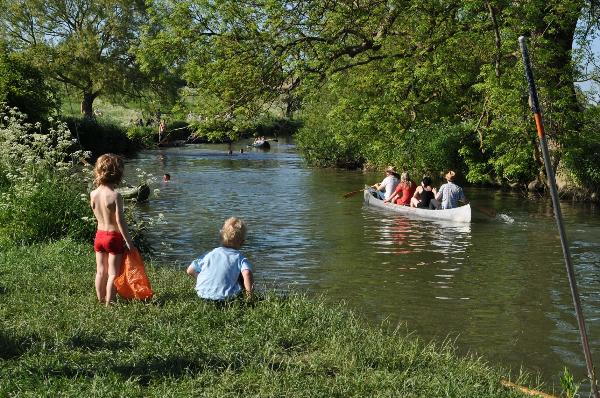
A. Oxford and Cambridge Colleges
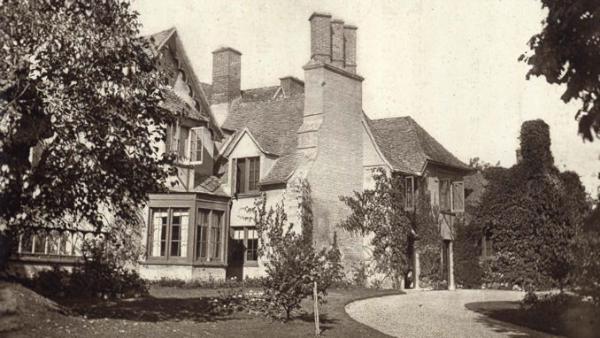
Three colleges have had a significant impact on Grantchester. When Walter de Merton was teaching students in Cambridge, he bought land in Grantchester, as part of his endowment of Merton College, Oxford, founded in 1264. Soon after Corpus Christi College, Cambridge, was founded in 1352, it acquired the benefice of the parish church. In the 1400s, King’s College, Cambridge, also began to purchase land here. It owned the manor next to the church by 1452 and most of the parish by 1866. The influence of the colleges was in contrast to Trumpington, where two families dominated land ownership by the early 1800s. The villages also differed in that Grantchester was not on a major road and had limited passing trade by comparison with Trumpington. However, there has been a long overlap between the two parishes. For example, Sir Francis Pemberton leased Grantchester Mill in 1694, Grantchester residents such as Samuel Page Widnall went to school in Trumpington in the 1830s and Trumpington Farm Company now farms land on both sides of the river.
B. The River Cam and the Meadows
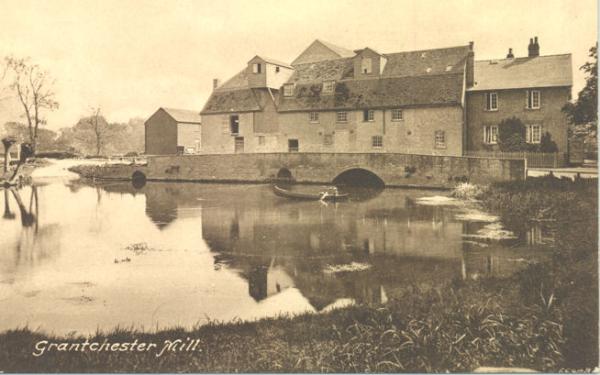
The river is the boundary between the historic parishes of Grantchester and Trumpington. It flows north from here through Cambridge and across the Fens to join the River Ouse. The meadows both sides of the river play a valuable role for wildlife and reduce the risk of flooding in Cambridge. Trumpington Farm Company has created Trumpington Fen on the Trumpington side, attracting species including green plover (lapwing), little egret and herons. The river from Newnham to Grantchester used to carry barges to the mills but is now the focus for punting, canoeing and swimming. Locals who grew up in the 1940s remember running from Cambridge to Grantchester and swimming back downstream; they also swam all year round at Byron’s Pool (Trail 6). The walk through Grantchester Meadows has been a favourite of students and academics, including Keats, Tennyson, Byron, Coleridge and Brooke, who wrote:
“ Oh, is the water sweet and cool,
Gentle and brown, above the pool?
And laughs the immortal river still
under the mill, under the mill?
C. Rupert Brooke and Grantchester Group
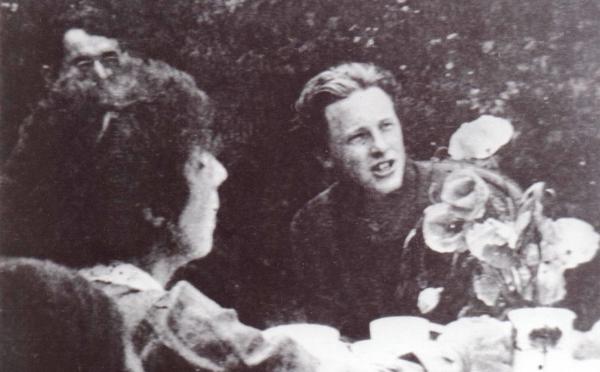
Rupert Brooke (1887-1915) lived in Grantchester from 1909 to 1913, at The Orchard and The Old Vicarage. He was awarded a fellowship to King’s College in 1912. His poems include The Old Vicarage, Grantchester , written in Berlin in 1912 (extracts below). Brooke became the centre of the Grantchester Group of artists, writers and philosophers, called the Neo-Pagans by Virginia Woolf. In addition to Brooke and Woolf, the group included E.M. Forster, Augustus John, Bertrand Russell, Maynard Keynes and Gwen Raverat. Brooke joined the Army in 1914, wrote acclaimed war poems such as The Soldier , and died on the way to Gallipoli in 1915. There was information about Brooke and the group in a museum at The Orchard Tea Room but this closed for renovation in 2015. He wrote:
“ At Over they fling oaths at one
And worse than oaths at Trumpington …
But Grantchester! Ah Grantchester!
There’s peace and holy quiet there …
Stands the Church clock at ten to three?
And is there honey still for tea?
D. Grantchester Parish Church
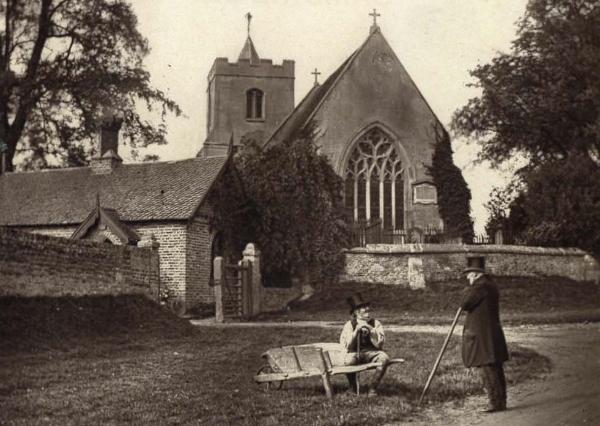
The interior of St Andrew and St Mary’s Church is normally open during the day. There is a history display and booklets. The chancel was rebuilt about 1360 and the nave was largely rebuilt and the tower added in the late 1500s. The extensive alterations in 1876-77 included raising the nave roof and the addition of the south aisle (there is a model made by Samuel Page Widnall showing the church before the alterations). The font is Norman or later and the early 17th century pulpit probably came from the chapel of Corpus Christi College. In the chancel, the floor in front of the altar has a mosaic which refers to two Cambridge colleges: it includes a pelican feeding her young with her own blood (symbol of self-sacrifice) and lilies (symbol of purity) which are on the coat of arms of Corpus Christi College, plus roses which represent King’s College.
Additional information
trumpingtonlocalhistorygroup.org
trumpingtonresidentsassociation.org
www.grantchester.org.uk
Food, drink and punting:
The Orchard Tea Garden
The Red Lion and Green Man, High Street
Rupert Brooke and Blue Ball Inn, Broadway
Punting ( www.scudamores.com/cam/grantchester.php )
© TLHG and TRA, September 2016.